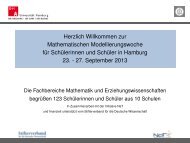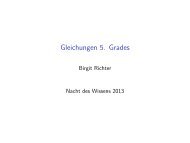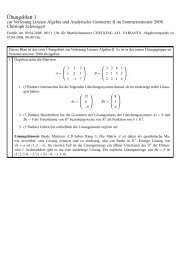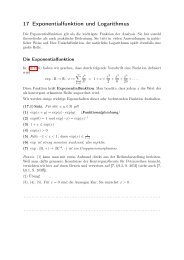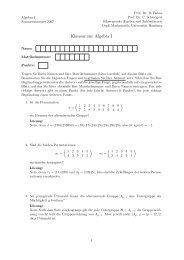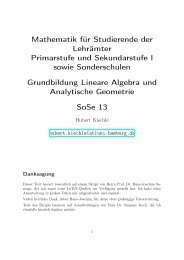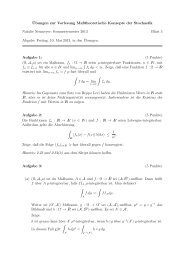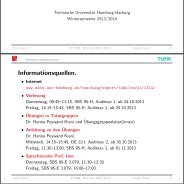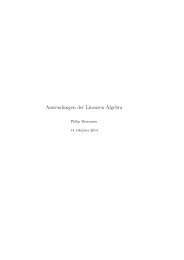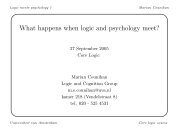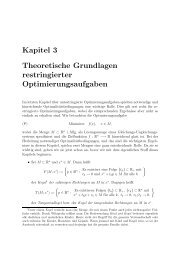pdf file
pdf file
pdf file
Create successful ePaper yourself
Turn your PDF publications into a flip-book with our unique Google optimized e-Paper software.
5.5 Quantum codes and Hopf algebras<br />
There are two basic tasks in computing, both for classical and quantum computing:<br />
• Storing information in a medium and transmitting information.<br />
• Doing computations by processing information.<br />
The first question leads to the mathematical notion of codes, the second to the notion of gates.<br />
We start our discussion with classical computing.<br />
5.5.1 Classical codes<br />
Implicitly, assumptions made on storage devices and manipulation of information in classical<br />
information theory is based on classical physics, as opposed to quantum mechanics.<br />
Information is stored in the form of binary numbers, hence in terms of elements of the<br />
standard vector space F n 2 over the field F 2 = {0, 1} of two elements. (Note that the standard<br />
basis of F n 2 plays a distinguished role.) We identify the elements of F 2 = {0, 1} with either<br />
on/off or with the truth values 0 = false and 1 = true. If we are dealing with an element of F n 2,<br />
we say that we have n bits of information.<br />
For storing and transmitting information, it is important that errors occurring in the transmission<br />
or by the dynamics of the storage device can be corrected. For this reason, only a subset<br />
C ⊂ F n 2 corresponds to valid information.<br />
Definition 5.5.1<br />
1. A subset C ⊂ (F 2 ) n is called a code. The number n is called the length of the code. One<br />
says that a code word c ∈ C is composed of n bits.<br />
2. A code C ⊂ (F 2 ) n is called linear, if C is a vector subspace. Then dim F2 C =: k is called<br />
the dimension of the code.<br />
One frequently allows instead of the field F 2 an arbitrary finite field. We will not discuss<br />
this in more detail.<br />
To deal with error correction, one defines:<br />
Definition 5.5.2<br />
Let K = F 2 and V = K n . The map<br />
d H : V × V → N<br />
d H (v, w) :=|{j ∈ {1, . . . , n}| v j ≠ w j }|<br />
is called Hemming distance. It equals the number of components (bits) in which the two code<br />
words v and w differ.<br />
Lemma 5.5.3.<br />
The Hemming distance has the following properties:<br />
1. d H (v, w) ≥ 0 for all v, w ∈ V and d H (v, w) = 0, if and only v = w<br />
2. d H (v, w) = d H (w, v) for all v, w ∈ V (symmetry)<br />
3. d H (u, w) ≤ d H (u, v) + d H (v, w) for all u, v, w ∈ V (triangle inequality)<br />
139




